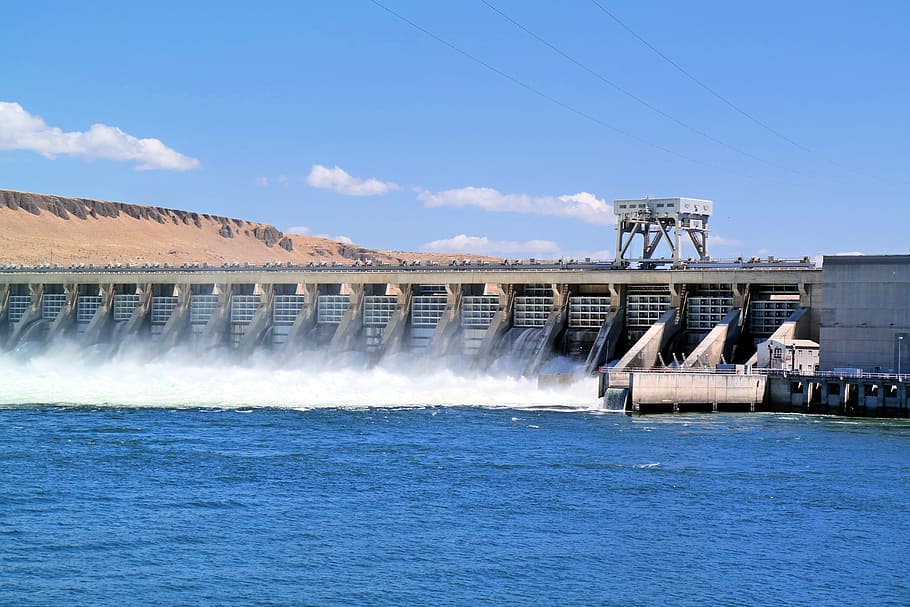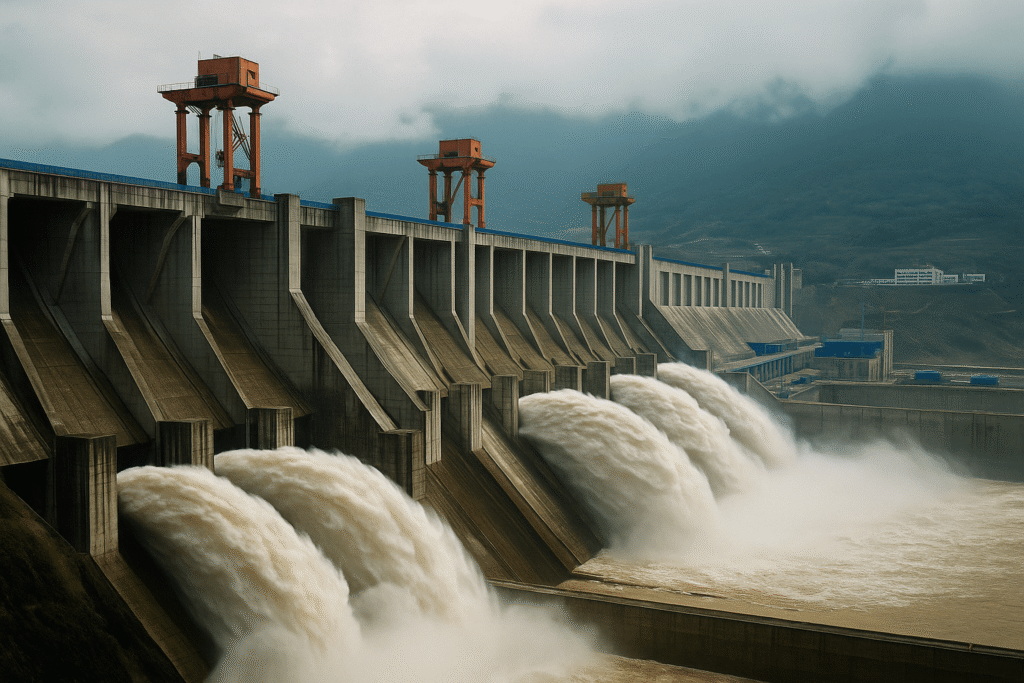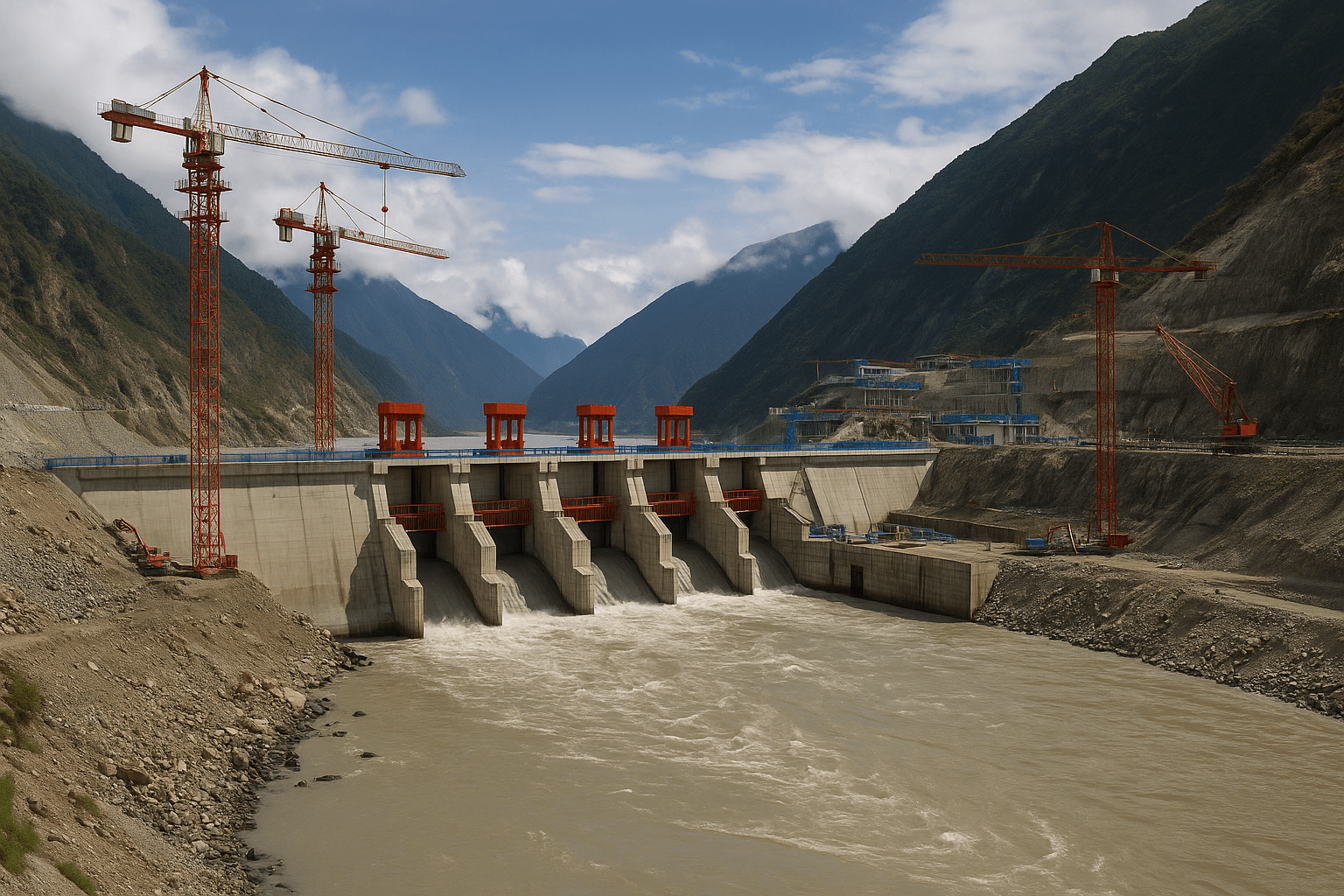In a bold move with sweeping geopolitical consequences, China has officially begun construction of a massive hydropower project on the Brahmaputra River, known as the Yarlung Tsangpo in Tibet. This development, launched in the remote region of Medog County, Tibet, has sent ripples of concern downstream, particularly in India and Bangladesh, where the river is vital to agriculture, ecosystems, and millions of livelihoods.
The new China Brahmaputra Dam, formally titled the Yarlung Zangbo River Lower Reach Hydropower Project, will involve the construction of five large hydropower stations, tunnel redirection, and straightening of the river’s natural bends. Backed by an estimated $167.8 billion investment (1.2 trillion yuan), this project is one of China’s most ambitious water infrastructure ventures to date.
China Dam in Tibet Raises Strategic and Environmental Alarms

China’s strategic interest in harnessing its upstream control of the Yarlung Tsangpo has long worried regional neighbors. As the river flows into India and becomes the Brahmaputra, it plays a vital role in sustaining northeast Indian states like Arunachal Pradesh and Assam.
Indian officials have raised urgent concerns over the Brahmaputra river dispute, fearing the dam may alter water flow volumes, disrupt seasonal patterns, and reduce water availability during dry months. The ecological and agricultural impacts could be severe for the millions who depend on the Brahmaputra water flow for irrigation, fisheries, and daily life.
“This is not just about water. It’s about security, stability, and sovereignty,” said a former Indian water resource expert, pointing to the India-China water conflict that has been quietly building over the years.
India’s Diplomatic Push for Transparency
Following China’s announcement of the dam plan in late 2023, India has consistently called for transparency and dialogue. In March 2025, India’s Minister of State for External Affairs, Kirti Vardhan Singh, informed Parliament that New Delhi had formally requested Beijing to consider the rights and needs of downstream countries.
This week, External Affairs Minister Dr. S. Jaishankar met with Chinese President Xi Jinping and Foreign Minister Wang Yi in Beijing. Among other issues, water cooperation and long-term ecological stability were front and center.
“Mutual respect, shared interests, and environmental responsibility must form the foundation of our engagement,” Jaishankar later posted on X, emphasizing that avoiding conflict over shared rivers is critical to regional peace.
India has also insisted on resuming hydrological data sharing, which China had paused in previous years. This data is vital for flood forecasting and river flow management during the monsoon season.
What’s at Stake? Downstream Impact of Dams on Brahmaputra River

Experts warn that the downstream impact of dams on transboundary rivers like the Brahmaputra can be devastating if not carefully managed. The Yarlung Tsangpo, known for its high sediment load and volatile seasonal flows, is not an ideal river for massive damming without detailed environmental impact assessments.
Changes in Brahmaputra water flow can affect everything from groundwater recharge to biodiversity across Assam and parts of Bangladesh. It could also intensify monsoon flooding or cause dry spells, depending on how the dam’s reservoir operations are managed.
“Even if China doesn’t intend to weaponize water, it holds the tap,” said a senior analyst at a Delhi-based strategic think tank. “That’s a dangerous imbalance for the region.”
A Growing Water Flashpoint Between India and China
This latest development is another chapter in the evolving India-China water conflict, which reflects deeper mistrust between the two Asian powers. While both countries have engaged in limited water cooperation mechanisms, no legally binding treaty exists for the Brahmaputra, unlike the Indus Waters Treaty between India and Pakistan.
The China dam in Tibet is being closely monitored by Indian intelligence and environmental agencies, who stress the need for multilateral talks, not just bilateral exchanges. Many experts believe that an international framework for Himalayan rivers is essential to prevent long-term environmental degradation and strategic miscalculations.
The Path Forward: Cooperation or Confrontation?
Water has emerged as the new frontier of power, and the Yarlung Tsangpo dam underscores how infrastructure can be used for both development and dominance. As China forges ahead with its dam-building agenda, the world watches closely to see whether it embraces responsible hydropower development or risks alienating its neighbors.
For India, the challenge is twofold: protecting its water security while pushing for greater diplomatic engagement over the China Brahmaputra Dam. As the geopolitical and environmental stakes rise, India must ensure that regional cooperation keeps pace with infrastructure development. For the millions living along the Brahmaputra, the future may well depend on decisions made hundreds of miles upstream—decisions directly influenced by the China Brahmaputra Dam and its long-term impact.







